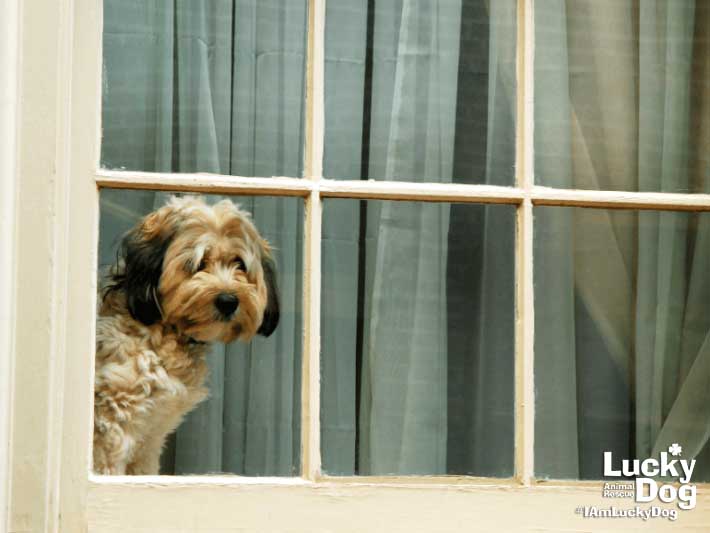What is Separation Anxiety/Isolation Anxiety?
Separation anxiety manifests when the dog is separated from their human companion. Isolation anxiety is a similar condition that results in the dog's isolation from anyone/anything. If a dog has isolation anxiety they are usually fine as long as there is another person/animal near them. The first 40 minutes the dog is alone is when they usually exhibit anxious behaviors. The anxious behaviors can include destructive behavior, house soiling, excessive vocalization, barrier frustration, self-harm (some dogs may chew themselves or harm themselves trying to escape a crate or room), excessive drooling and restlessness.

Prevention of Separation Anxiety
You will want to require your dog to spend time alone in a positive manner. Establish a relward history with crate training and provide ample appropriate interactive toys. Also, establish an exercise, play and elimination schedule. A tired dog with a structured life is a happier dog! Don't overdo it with the departure and greetings. The more excited you make your dog about you coming and going the more it could lead to them becoming anxious while you are gone.
What Can I Do To Help My Dog?
- Eliminate attention on demand and walks on demand. Don't let your dog control when and where they get attention. They should only be getting love and affection when they are calm, not anxious.
- Reward relaxed behavior. Sit/Stay, Down/stay and Place/stay exercises are a good way to assist your dog in relaxing. I like to call this doggy meditation. These exercises teach a dog to be calm on their own and to override their impulses to be in constant motion or to always be by your side.
- Enforce separation while you are home. This is under supervision. Use a place/stay or a crate. Continue working on teh crate training by putting the behavior on cue. Say "Crate" then toss food in the back and slowly increase time in her crate. Reward for good behavior! Do not let your dog out if they are whining or barking. Wait for a break in anxious of at least 5-10 seconds before opening the crate door.
- Provide regular aerobic exercise. A tired and relaxed dog is a happy and fully enriched dog.
- Downplay greetings and departures. This doesn't mean you can never say goodbye to your dog. Get all of the hugs/kisses out of the way 30 minutes before you plan to leave so there is no connection. Overly excited greetings and departures can induce anxious behaviors and make separation anxiety worse.
- Decouple departure cues. Mix up your routine. Grab your keys and sit on the couch. Put your shoes and coat on and watch T.V. or read a book. Put on your work clothes and start cooking dinner. Dogs can be good at predicting patterns so the more you mix up your routine the less likely you will induce anxiety in your dog.
- Graduated Departures. You can practices leaving your home or going into another room of the house at random times and patterns throughout the day.
In some extreme cases medication might be necessary to help reduce anxiety so a behavioral treatment plan can be effective. The proper medication will need to be discussed with your veterinarian.
If you find yourself struggling with a dog that has separation anxiety contact a certified professional dog trainer to assist in helping your dog become happy, healthy and well-balanced.
Happy Training!
*Article Courtesy of Chelsea Shanline, ABCDT, On Target Dog Training
